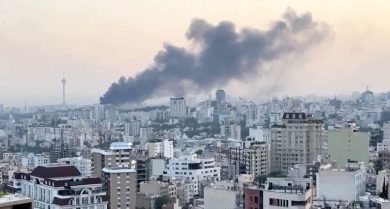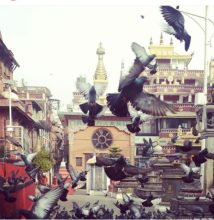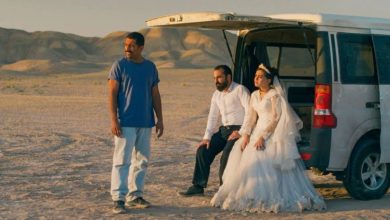
Pooneh Nedai,
Editor in chief of Shokaran magazine / Iran
TEHRAN: Farah Ossouli, a renowned Iranian artist, presents a new world on the canvas of contemporary art at the Max Ernst Museum in Brühl. In her work, the woman’s body becomes a battlefield full of power, resistance, and untold secrets. This exhibition, running from June 27 to October 5, 2025, is the result of many years of reflection and a unique blend of Iranian artistic traditions and European art history.
A Bridge Between Two Cultures
Farah Ossouli (born 1953) is a painter, graphic designer, and miniaturist who holds a special place in contemporary world art. She not only uses traditional Iranian miniature techniques in a new and original way but also connects them with the surrealist collages of Max Ernst, creating a bridge between two different cultures and visual languages. This combination opens a window to the inner worlds of women across history and different places.

A Personal Honor
Because of family connections, I was lucky to see early studies of the exhibition’s works in Iran and enjoy them. Ossouli said at that time: “Women are always in battle; no matter what role they have—child, daughter, woman, mother, or social activist—they cannot escape the struggle of being a woman.”
A Joint Exhibition of Ossouli and Ernst
Now Farah Ossouli is in Germany again. Her presence recalls an exhibition in the Ludwig Museum in Koblenz two decades ago, where, along with her sister, Firoozeh Gorgansouli, she organized an Iranian Women’s Film Festival, showing her deep concern for the role of women in art and society.
This time, Madeleine Frey, director of the Max Ernst Museum, invited Ossouli to Brühl, where 15 new works inspired by Max Ernst’s collage series were shown.
Ossouli’s Reinterpretation of Ernst’s Works
Max Ernst’s collage series, created in 1934, depicts violence, power, gender, and mythology—topics that Ossouli reinterprets not as dry historical stories but as a language full of feeling and meaning. In this collection, women are not just objects to look at but heroes of the battlefield created by history and culture.

The Fragility and Strength of Women
One of the most striking works is “The Fall” (Der Sündenfall), where Ossouli reimagines Ernst’s image of a man throwing a woman out of a window. This time, the man, symbolizing violence, wears everyday clothes and casts a shadow of oppressive forces over the scene. The woman’s body appears fragile yet strong at the same moment—both victim and hero.
In Harmony with Forough Farrokhzad’s Poetry
One reason the exhibition is so powerful is that poems by Forough Farrokhzad accompany each artwork. Farrokhzad was a brave poet who spoke openly about love, freedom, and the role of women. Her words resonate deeply with Ossouli’s delicate and complex images, adding another layer to the viewer’s experience and awakening feelings of resistance and hope.

The Battlefield
In Ossouli’s works, the woman’s body is a battlefield that has lasted for thousands of years, where power, dominance, resistance, and freedom are all tightly intertwined. Using her special technique rooted in Iranian traditions, she portrays this struggle not only as a political issue but as a human and universal story.
An Invitation to See the Works
The exhibition in Brühl, where art and history meet, offers viewers a chance to dive deep into this delicate and intense dialogue—a dialogue from Farah Ossouli, inspired by Ernst and Farrokhzad, reminding us that “the savior lies buried in the grave” but is always waiting to awaken.

Exhibition Statement by Ossouli
Following several exchanges, I met with Ms. Madeleine Frey, the director of Max Ernst Museum in Brühl, Germany. She had previously seen my “Monalisa” (2012), was familiar with my practice of incorporating works of classical painters, and wanted to know if I was interested in doing the same with select works of Ernst. I knew of Ernst from my university years; I was interested in Surrealism as a movement, but works of the artist I had in memory weren’t along my line of work. I walked through the museum and came upon A Week of Kindness (Une Semaine de bonté). In these illustrations, Ernst depicts half-human creatures, metamorphosed beyond recognition, suspended between a world of raw instinct and rationality.
I found A Week of Kindness collection closer to my view of the human condition today. Thematically, they hint at political and social issues, are critical of violence and the ethical breakdown of the modern world. Bodies, hysterical, contorted, exaggerated, and groundless, find themselves in a dark space. The term “hysterical arch” turned into a visual, psychoanalytic metaphor for me – especially when it comes to the bodies of women, suspended between the earth and the sky, wrung in suffering and defiance.
My work makes use of the tradition of Persian painting of the Safavid era Iran to show how the human body and identity is thrown into a state of flux and uncertainty. Traditional elements used in Persian painting – form, figure, ornamentation, poetry – still hold a place in my work and I employ techniques like qalamgiri to arrive at new referents and meanings:
● Poetry is no longer a vehicle for relating a romantic or mystic tale; it is used to reflect on pain, crisis, and being a woman today
● Border illuminations are no longer just ornamental tools or ways to give the work a halo of sacredness; they are instruments to represent violence, death, and destruction
● Figures are no longer idealized or bear mythological significance; they are fragile, lonely, and struggling with bitter realities of life.
In Bear Flight in Mind, much like collections of Ernst, contradictory elements show up next to each other: beauty through delicacy appears next to violence in hidden layers of the image. Because of their size, the viewer has to come closer to the work and this proximity leads to an intimate, one-to-one dialogue. Contrary to larger works which impress us from a distance, this collection invites a different kind of contemplation.
Ernst and I share similar historical experiences. Ernst saw both world wars and the hiatus between them; I witnessed revolution, war, and the ensuing social and ideological closure. Violence, repetition of history, repression of women, and the faceless, irresponsible role of the agents of peril – what Hannah Arendt calls the banality of evil – are present in both worlds. Perpetrators of violence are looking at their victims with impunity, and victims wonder where humanity is.
The combination of a man with the head of a rooster, the presence of things that don’t belong together, acquiescence to violence, and the presence of violated and vulnerable bodies are common threads that link the world of Ernst to mine.
In my view, the female body is always a battleground of protection, repression, or elimination. In Iranian literature as well as in Western lore, the female hair is at times a savior (a rope to escape, a thread of survival) and at other times an excuse to chastise (shaving off, mutilation). At the same time, women are the big absentees of historical records. In wars, in revolutions, in natural disasters, the injury or injustice leveled at women are by and large ignored. The female body, covered or exposed, is subject to control. The language of art I pursue tries to reveal this safe-kept, castigated, banished narrative.
In Persian mythology, Simurgh is a bird symbolizing wisdom and standing for compassion; high-flying, high-minded, healing, motherly. In this collection, too, Simurgh, much like women in our societies, stands for an inner force that withstand injustice and injury to bring light out of darkness.
I fell in love, became a mother, an artist, but war cast a grey shadow over the blue dome of my country. This dark shadow is still affecting my body and soul.





Dear Farah,
Thank you so much for sharing your exhibition report, “The Woman’s Body as a Battlefield,” at the Max Ernst Museum in Brühl. I was deeply moved by your powerful visual language and the profound way you engage with Persian miniature traditions in a contemporary and feminist context.
Your 15‑piece series Remember the Flight, the Bird Will Die, inspired by Forough Farrokhzad’s poem, struck me deeply. The recurring motif of hair—symbolizing femininity, intimacy, vulnerability, yet also societal control and oppression—was presented with incredible nuance and poetic strength . This dialogue between Persian and European art (especially the resonance with Max Ernst’s Une semaine de bonté) created a moving conversation across time, culture, and gender .
Your ability to weave historical poetry and miniature aesthetics into a narrative about contemporary political and feminist issues is truly masterful. It’s no wonder your work has been collected by prestigious institutions like the Met, Tehran Museum of Contemporary Art, and Ludwig Museum in Koblenz .
Congratulations on this meaningful and courageous exhibition. I admire how you bring forward the tension between beauty and violence, tradition and resistance—inviting viewers to reflect deeply on the condition of women’s bodies in our world.
Thank you for honouring us with your art. I feel privileged to witness such a profound expression of courage and creativity.
Warmest regards,
Dr. Reza Mohaghegh
North Vancouver, Canada